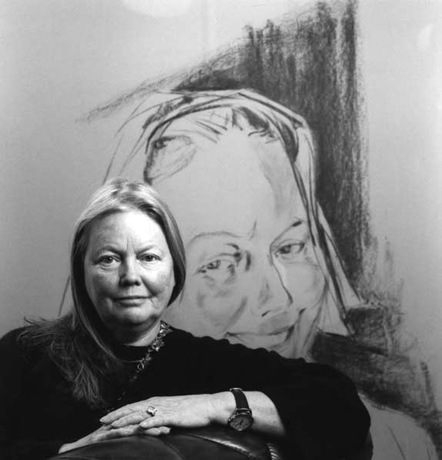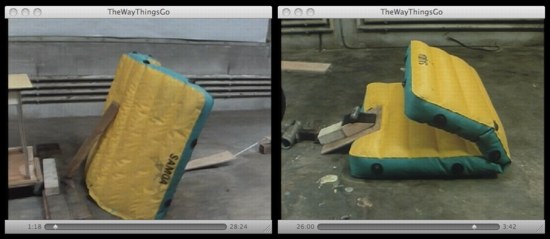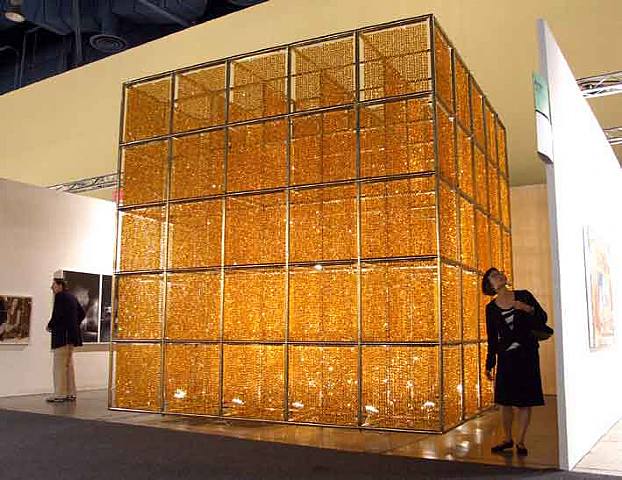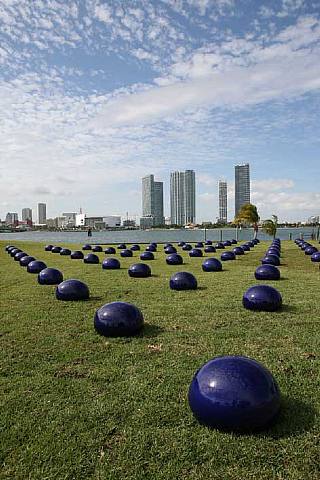Obituary of Willoughby Sharp in the New York Times, December 31, 2008
The piece, by Margalit Fox, is found on page B16 of the New York print edition of December 31, 2008. It appeared online a day earlier, accompanied by a 1967 picture of Willoughby with long hair, dark glasses and wearing a white turtleneck/tunic ensemble.
I also referenced the piece on the Sharpville site.

Willoughby Sharp, 72, Versatile Avant-Gardist, Is Dead
By MARGALIT FOX
Published: December 30, 2008
Even by conceptual-art standards, Willoughby Sharp’s work stood out. There was his gestational spin in a clothes dryer. There was the curious affair of the talcum powder, the teddy bear and the tab of LSD. And there was the Oklahoma Gun Incident, which members of the art world still discuss, with a mixture of horror and awe, more than 30 years later.
Mr. Sharp, the Ivy League-educated scion of one of New York’s most socially prominent families, who in the 1960s and afterward was on the cutting edge of the American avant-garde as a performer, producer, writer, publisher, curator, video artist and much else, died on Dec. 17 in Manhattan. He was 72 and lived in Brooklyn.
The cause was cancer, his wife, Pamela Seymour Smith Sharp, said.
A central figure in conceptual and performance art back when those forms were new and daring, Mr. Sharp was concerned with making art that was as much for the mind as it was for the eye. Along with artists like Chris Burden and Nam June Paik, Mr. Sharp helped expand the very idea of what constituted a work of art.
Mr. Sharp was also known as the publisher of Avalanche, a widely respected, handsomely produced art magazine he founded with the writer and filmmaker Liza Béar. Published for just 13 issues between 1970 and 1976, Avalanche featured in-depth interviews with many rising contemporary artists of the day, among them Mr. Burden, William Wegman and Joseph Beuys, the charismatic German artist of whom Mr. Sharp was an early champion.
As a curator, Mr. Sharp attracted international attention with “Earth Art,” a 1969 exhibition at Cornell University. Groundbreaking in every sense of the term, the exhibition featured site-specific installations — by Dennis Oppenheim, Robert Smithson, Hans Haacke and others — that were hewn, molded or otherwise created from the land itself. Mr. Sharp also ran the Willoughby Sharp Gallery, on Spring Street in SoHo, from 1988 to 2004.
Mr. Sharp’s film and video works are in the collections of major museums around the world, including the Museum of Modern Art in New York and the Museum of Fine Arts in Boston. In 1976 he represented the United States at the Venice Biennale.
Willoughby Sharp was born in Manhattan on Jan. 23, 1936. His family appeared often in the society pages; as the announcement of Mr. Sharp’s first marriage in The New York Times pointed out in 1960, he was “a nephew of the dowager Lady Eliott of London and Redheugh, Scotland, widow of Sir Gilbert Eliott, tenth baronet of the Clan of Eliott.” Mr. Sharp’s mother, a former Ziegfeld Girl whose marriage to his father had caused a family scandal of no small dimension, was by all accounts a refreshing counterweight.
Mr. Sharp earned a bachelor’s degree in art history from Brown University in 1957, followed by graduate work at the University of Paris, the University of Lausanne and Columbia University, where he was a student of the noted art historian Meyer Schapiro. He later taught at the School of Visual Arts in New York, the University of Rhode Island and elsewhere.
Mr. Sharp’s first marriage, to Renata Hengeler, ended in divorce, as did his second, to Shavon Martin. Besides his wife, Pamela, Mr. Sharp is survived by a daughter from his first marriage, Saskia Sharp of Düsseldorf, Germany, and two grandchildren.
Much of Mr. Sharp’s art was rooted in autobiography. In “Saskia,” first performed in 1974, he mourned losing touch with his daughter, whom he was unable to see after his first marriage ended.
As the magazine Art in America recounted the work this year, Mr. Sharp “videotaped himself in front of a live audience as he attempted to recapture Saskia by re-enacting her birth — albeit with a difference. After shaving and covering his body in powder and perfume and dropping LSD, he crawled into a crib wearing only a diaper and, after much angst-ridden convulsing, ‘gave birth’ to the teddy bear he had stuffed between his legs.”
Another work, “Stay!,” Mr. Sharp’s account of a turbulent love affair, had its premiere in 1974 at the University of Oklahoma. As a camera rolled, he and a female student volunteer disported themselves passionately on a bed. Their every word and deed was transmitted by video to the audience, locked in the campus gym nearby.
Then, without warning, Mr. Sharp slapped his partner across the face. They struggled, and from beneath the mattress he pulled a pistol. At the precise moment the video feed went dead, he fired a single shot.
This did not play in Norman, Okla. The audience rushed the doors and poured from the gym. They found the young woman in an adjoining room, bewildered but unhurt.
And then there was the clothes dryer. In “Full Womb,” a 1975 work, Mr. Sharp climbed into an industrial dryer with a baby bottle, shut the door and tumbled while imagining his parents making love.
The 15-minute performance seemed to recapitulate his own gestation, only faster, warmer and with more static cling.






































